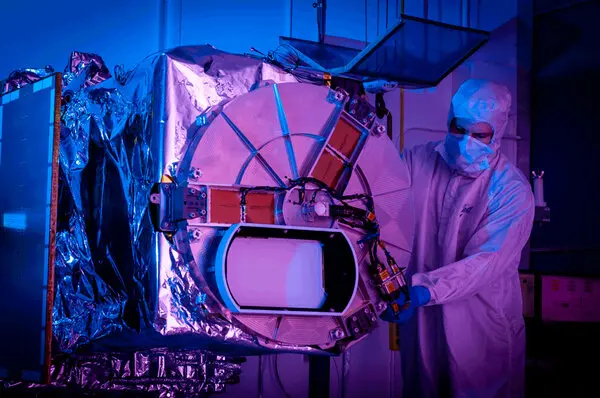NASA’s new space-based pollution instrument.
TEMPO, has just released its first maps, revealing higher pollution rates in metropolitan areas. This groundbreaking tool will greatly assist scientists in studying North American air quality on an hourly basis. The data from TEMPO will have long-lasting benefits for neighborhoods and communities across the country.
A Pioneering Endeavor
NASA has a long history of exploring the cosmos, but it’s also committed to understanding our home planet and its changing environment. The TEMPO instrument is a testament to this dual mission. Launched in February 2022 aboard a SpaceX Falcon 9 rocket, TEMPO represents a significant advancement in Earth monitoring technology.
TEMPO, which was launched in April and orbits 22,000 miles above the equator, enables scientists to study the health impacts of pollutants at a neighborhood scale. It provides hourly measurements, shedding light on the effects of rush-hour traffic, forest fires, and fertilizer usage. By measuring sunlight reflected off the Earth’s surface, atmosphere, and clouds, TEMPO can determine the concentrations of various gases, including nitrogen dioxide.
NASA plans to share this valuable data with partner agencies such as the EPA and NOAA. The satellite’s systems are currently being checked and calibrated before regular hourly operations begin in October. NASA sees this data as crucial in its efforts to achieve the Biden administration’s climate goals.
On August 2nd, TEMPO beamed back its first images, showcasing the I-95 corridor in the Northeast, a portion of the South, and a section of the Southwest. The maps confirm a high density of nitrogen dioxide over cities and their surrounding areas.
The data also provides detailed views of nitrogen dioxide levels, which are highest in the morning over cities and major highways. As the day progresses, the morning pollution dissipates, only to rise again in the afternoon during the second rush hour.
Key Features of the TEMPO Instrument:
- Precision Monitoring: TEMPO is designed to continuously monitor Earth’s atmosphere, providing highly detailed, high-resolution data on air quality.
- Rapid Refresh: The instrument can capture pollution data every hour, enabling scientists to track changes in air quality in near-real-time.
- Broad Coverage: TEMPO’s coverage spans across North America, allowing it to monitor air quality over the United States, Canada, and Mexico comprehensively.
- Comprehensive Gases: It measures a wide range of pollutants, including ozone, nitrogen dioxide, sulfur dioxide, formaldehyde, and aerosols.
- Scientific Collaboration: TEMPO is a collaborative effort between NASA, the Smithsonian Astrophysical Observatory, and several other institutions, showcasing the importance of international cooperation in environmental research.
The Fight Against Air Pollution
Air pollution is a global challenge with far-reaching implications for human health, ecosystems, and climate change. Monitoring and understanding air quality is crucial for mitigating the impacts of pollution and developing effective strategies to combat it.
TEMPO provides a wealth of data that can be used for various purposes:
- Health Impact Assessment: The instrument’s high-resolution data can help researchers assess the health effects of air pollution with unprecedented precision.
- Environmental Policy: TEMPO’s real-time data can inform environmental policies and regulations, helping governments make informed decisions to protect their populations.
- Climate Modeling: Pollution data gathered by TEMPO can enhance climate models by providing insights into the role of pollutants in atmospheric chemistry and climate change.
- Public Awareness: The availability of pollution maps and data can raise public awareness about air quality issues, encouraging individuals and communities to take action.
Environmental Conservation and Beyond
TEMPO’s pollution maps represent a significant step forward in our efforts to monitor and combat air pollution. Beyond its immediate applications, the instrument has the potential to contribute to a wide range of environmental and scientific endeavors.
From assessing the impact of pollution on ecosystems to understanding its role in climate change, TEMPO’s data is a valuable resource for researchers and policymakers alike. Moreover, it underscores the importance of space technology in addressing global environmental challenges.
NASA Administrator Bill Nelson emphasized the importance of this data for everyday Americans and decision-makers. With the easier accessibility and utilization of TEMPO data, monitoring and improving the air quality we breathe becomes possible, ultimately benefiting life here on Earth.

